BOOKS

The Nest in the Stream: Lessons from Nature on Being with Pain
– Michael Kearney MD, 2018
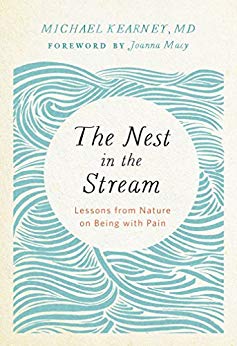 A concise and inspirational book for anyone dealing with pain by a long time palliative care doctor who is greatly inspired by Native American wisdom and the natural world. This book is a celebration of impermanence and what it means to be awake, alive, and connected to the world.
A concise and inspirational book for anyone dealing with pain by a long time palliative care doctor who is greatly inspired by Native American wisdom and the natural world. This book is a celebration of impermanence and what it means to be awake, alive, and connected to the world.
The Nest in the Stream is an encouraging and inspiring book for the times we live in. Michael Kearney, a physician whose day job is alleviating the pain and suffering of others, shows that how we live with our pain matters hugely, as it affects our quality of living and our capacity to find healing for ourselves, for others, and for our world. Drawing on engaged Buddhism, the indigenous wisdom of Native American and Celtic spirituality, and the powerful teachings he gained by observing nature, Kearney presents a new model for resilience and self-care.
Traditional models of self-care emphasize the importance of professional boundaries to protect us from stress, and time out to rest and recover. The Nest in the Stream offers a way of being with pain that is infused with mindfulness, openness, compassion, and deep nature connection that encourages us to act for the freedom and welfare of all. It will appeal to those whose everyday occupation involves dealing with pain, such as healthcare workers, environmental activists, or those working on the front lines of trauma, but it will also be of interest to everyone who longs to live in our wounded world with an open heart.
Forest Bathing: How Trees Can Help You Find Health and Happiness
– Dr. Qing Li, 2018
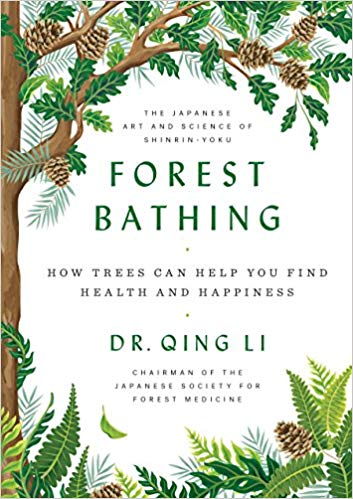 Notice how a tree sways in the wind. Run your hands over its bark. Take in its citrusy scent. As a society we suffer from nature deficit disorder, but studies have shown that spending mindful, intentional time around trees–what the Japanese call shinrin-yoku, or forest bathing–can promote health and happiness. In this beautiful book–featuring more than 100 color photographs from forests around the world, including the forest therapy trails that criss-cross Japan–Dr. Qing Li, the world’s foremost expert in forest medicine, shows how forest bathing can reduce your stress levels and blood pressure, strengthen your immune and cardiovascular systems, boost your energy, mood, creativity, and concentration, and even help you lose weight and live longer. Once you’ve discovered the healing power of trees, you can lose yourself in the beauty of your surroundings, leave everyday stress behind, and reach a place of greater calm and wellness.
Notice how a tree sways in the wind. Run your hands over its bark. Take in its citrusy scent. As a society we suffer from nature deficit disorder, but studies have shown that spending mindful, intentional time around trees–what the Japanese call shinrin-yoku, or forest bathing–can promote health and happiness. In this beautiful book–featuring more than 100 color photographs from forests around the world, including the forest therapy trails that criss-cross Japan–Dr. Qing Li, the world’s foremost expert in forest medicine, shows how forest bathing can reduce your stress levels and blood pressure, strengthen your immune and cardiovascular systems, boost your energy, mood, creativity, and concentration, and even help you lose weight and live longer. Once you’ve discovered the healing power of trees, you can lose yourself in the beauty of your surroundings, leave everyday stress behind, and reach a place of greater calm and wellness.
Your Guide to Forest Bathing: Experience the Healing Power of Nature
– M. Amos Clifford, 2018
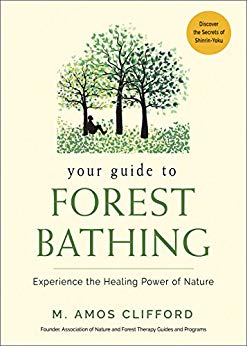 Simply being present in the natural world – with all our senses fully alive – can have a remarkably healing effect. It can also awaken in us our latent but profound connection with all living things. This is “forest bathing”, a practice inspired by the Japanese tradition of shinrin-yoku. It is a gentle, meditative approach to being with nature and an antidote to our nature-starved lives that can heal our relationship with the more-than-human world. In Your Guide to Forest Bathing you’ll discover a path–along with specific activities presented by Amos Clifford, one of the world’s most experienced forest bathing experts–that you can use to begin a practice of your own. Whether you’re in a forest or woodland, public park, or just your own backyard, this book will be your personal guide as you explore the natural world in a way you may have never thought possible.
Simply being present in the natural world – with all our senses fully alive – can have a remarkably healing effect. It can also awaken in us our latent but profound connection with all living things. This is “forest bathing”, a practice inspired by the Japanese tradition of shinrin-yoku. It is a gentle, meditative approach to being with nature and an antidote to our nature-starved lives that can heal our relationship with the more-than-human world. In Your Guide to Forest Bathing you’ll discover a path–along with specific activities presented by Amos Clifford, one of the world’s most experienced forest bathing experts–that you can use to begin a practice of your own. Whether you’re in a forest or woodland, public park, or just your own backyard, this book will be your personal guide as you explore the natural world in a way you may have never thought possible.
What the Robin Knows: How Birds Reveal the Secrets of the Natural World
– Jon Young, 2012
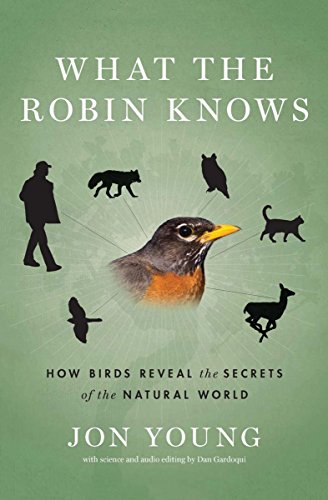 A lifelong birder, tracker, and naturalist, Jon Young is guided in his work and teaching by three basic premises: the robin, junco, and other songbirds know everything important about their environment, be it backyard or forest; by tuning in to their vocalizations and behavior, we can acquire much of this wisdom for our own pleasure and benefit; and the birds’ companion calls and warning alarms are just as important as their songs. Birds are the sentries of—and our key to understanding the world beyond our front door. By learning to remain quiet and avoid disturbing the environment, we can heed the birds and acquire an amazing new level of awareness. We are welcome in their habitat. The birds don’t fly away. The larger animals don’t race off. No longer hapless intruders, we now find, see, and engage the deer, the fox, the red-shouldered hawk—even the elusive, whispering wren. Deep bird language is an ancient discipline, perfected by Native peoples the world over. Finally, science is catching up. This groundbreaking book unites the indigenous knowledge, the latest research, and the author’s own experience of four decades in the field to lead us toward a deeper connection to the animals and, in the end, ourselves.
A lifelong birder, tracker, and naturalist, Jon Young is guided in his work and teaching by three basic premises: the robin, junco, and other songbirds know everything important about their environment, be it backyard or forest; by tuning in to their vocalizations and behavior, we can acquire much of this wisdom for our own pleasure and benefit; and the birds’ companion calls and warning alarms are just as important as their songs. Birds are the sentries of—and our key to understanding the world beyond our front door. By learning to remain quiet and avoid disturbing the environment, we can heed the birds and acquire an amazing new level of awareness. We are welcome in their habitat. The birds don’t fly away. The larger animals don’t race off. No longer hapless intruders, we now find, see, and engage the deer, the fox, the red-shouldered hawk—even the elusive, whispering wren. Deep bird language is an ancient discipline, perfected by Native peoples the world over. Finally, science is catching up. This groundbreaking book unites the indigenous knowledge, the latest research, and the author’s own experience of four decades in the field to lead us toward a deeper connection to the animals and, in the end, ourselves.
Coyote’s Guide to Connecting with Nature
– Jon Young, Evan McGown, Ellen Haas, 2010
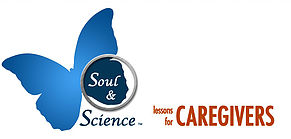
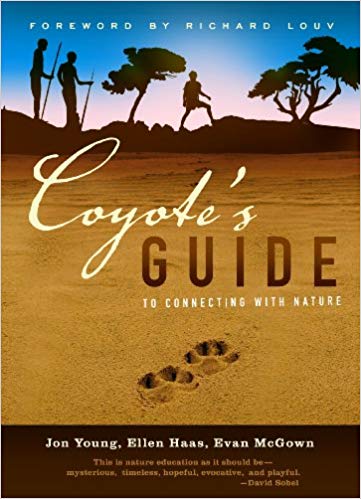 Coyote’s Guide to Connecting with Nature has been hailed by Richard Louv, author of Last Child in the Woods, as “good medicine for nature-deficit disorder.” The first edition quickly became the essential guidebook for mentors, parents, teachers, camp directors, and others wanting fun and exciting ways to connect children (and adults!) with nature. Now, the completely revised and updated Coyote’s Guide to Connecting with Nature, 2nd Edition has been released. Written by Jon Young, Ellen Haas, and Evan McGown, Coyote’s Guide 2nd Edition is an even more valuable resource for reconnecting people to the natural world. Based on feedback from nature mentors and educators around the world, the second edition is not only more comprehensive it s grown from 408 to 548 pages but it s much easier to use, with beautiful full color photographs, a comprehensive index, and color codes that link the principles and activities for easier navigation. Coyote mentoring is a method of learning that has been refined over thousands of years, based on instilling the need-to-know. Coyote’s Guide to Connecting with Nature, 2nd Edition reveals this approach and what happens to student and teacher during the mentoring process. Strategies like questioning, storytelling, tracking, mapping, and practicing survival skills will inspire student curiosity and encourage self-sufficiency. Background information will help parents, teachers and others feel more confident in introducing children to new ways of experiencing and learning about the natural world. As naturalist Jon Young writes in the Introduction, “Experience has taught me that Coyote Mentoring, working on so many levels, is by far the most effective learning and healing journey I have yet to encounter. I have seen people fully connect to the birds of their landscape, discovering hawks, foxes, and owls with the help of birds and other animals.”
Coyote’s Guide to Connecting with Nature has been hailed by Richard Louv, author of Last Child in the Woods, as “good medicine for nature-deficit disorder.” The first edition quickly became the essential guidebook for mentors, parents, teachers, camp directors, and others wanting fun and exciting ways to connect children (and adults!) with nature. Now, the completely revised and updated Coyote’s Guide to Connecting with Nature, 2nd Edition has been released. Written by Jon Young, Ellen Haas, and Evan McGown, Coyote’s Guide 2nd Edition is an even more valuable resource for reconnecting people to the natural world. Based on feedback from nature mentors and educators around the world, the second edition is not only more comprehensive it s grown from 408 to 548 pages but it s much easier to use, with beautiful full color photographs, a comprehensive index, and color codes that link the principles and activities for easier navigation. Coyote mentoring is a method of learning that has been refined over thousands of years, based on instilling the need-to-know. Coyote’s Guide to Connecting with Nature, 2nd Edition reveals this approach and what happens to student and teacher during the mentoring process. Strategies like questioning, storytelling, tracking, mapping, and practicing survival skills will inspire student curiosity and encourage self-sufficiency. Background information will help parents, teachers and others feel more confident in introducing children to new ways of experiencing and learning about the natural world. As naturalist Jon Young writes in the Introduction, “Experience has taught me that Coyote Mentoring, working on so many levels, is by far the most effective learning and healing journey I have yet to encounter. I have seen people fully connect to the birds of their landscape, discovering hawks, foxes, and owls with the help of birds and other animals.”